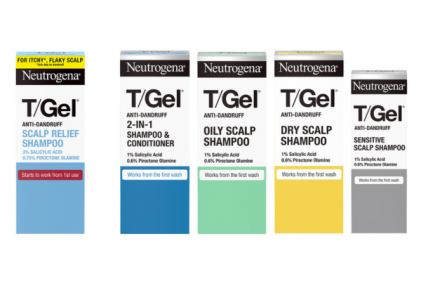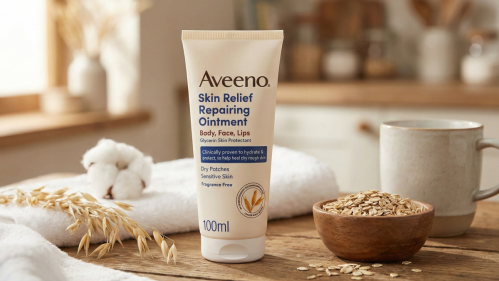
There are many reasons women get stretch marks throughout their lives. The fat in a woman’s body is distributed in such a way as to cause these streaks in your skin. They may be red, purple, or silver white, like scar tissue. Most people believe that stretch marks are caused during rapid weight gain, but in reality, that’s only half the story. Stretch marks are actually caused when your body stretches during rapid weight gain, but they become most visible, during rapid weight loss, when your body shrinks itself back down. That’s why it’s so common to have stretch marks that appear after pregnancy, and why women are much more likely to get stretch marks than men.
Stretch marks are most common in places that gain weight quickly. For women, that means your thighs, butt, hips, and stomach. Regulating your diet and making sure to eat on schedule is a great way to protect yourself from stretch marks overall. But during pregnancy, gaining weight rapidly is a given. Fortunately, there are ways to keep your skin supple and healthy, to avoid causing stretch marks, even with the rapid weight gain caused by pregnancy.
Do Genetics Have An Impact? The short answer is yes. The weight gain during pregnancy can leave every woman susceptible to stretch marks during a pregnancy. But your genetics also play a part. If the women in your family commonly experience more rapid weight gain during pregnancy, you are more likely to experience it too. Ironically, if you're thin, you're more likely to have stretch marks, since your body is less used to changes in weight, and will have even less room to adjust. So if you're genetically on the heavier side, you may actually have less to worry about. Certain genetic disorders, such as Cushings, or Marfan syndrome, which can come with rapid fluctuations in weight, also causes stretch marks.
Fortunately, during pregnancy, it is possible to lessen the effect of stretch marks. You may not be able to remove them outright, but there’s plenty you can do.
Stay Hydrated
Drinking plenty of water during pregnancy will help keep your blood pressure down, and keep the baby healthy. As an added bonus, it helps keep your skin moisturized. That protects against your skin tightening, which cuts down on both wrinkles and stretch marks. Staying away from caffeine is another good way to stay hydrated. And pregnancy is a good time to stay away from caffeine, and to drink more water. So drink up!
Be Careful of Medications
It's especially important to be mindful of your meds while you're pregnant. Anything you take can affect the baby. But there are also medications that contribute to weight gain and stretch marks. Corticosteroids, like the kind found in asthma or antihistamine medication can cause weight gain beyond pregnancy, and contributes to the appearance of stretch marks. Talk to your doctor to find meds that won't risk weight gain, and are safe for the baby.
Take Plenty of Vitamins
If you’re not eating healthy enough, it will show up on your skin. Getting more vitamins, especially vitamin C, vitamin D, and vitamin E are essential to a healthy, hydrated skin.
Vitamin C can be found in many fruits and vegetables. Citrus fruits are well known as a good source of vitamin C. Vitamin C also plays a vital role in producing collagen, which aids in keeping your skin supple and elastic. To get more vitamin C, try drinking more orange juice, and eating more tomatoes. Grapefruits and lemons are also full of vitamin C.
Vitamin D is another important nutrient your skin needs to stay healthy. The easiest way to make sure you’re getting lots of vitamin D is to spend a lot of time in the sun! Vitamin D is most commonly found in sunlight. So it’s doubly important to get plenty of time outdoors while you’re pregnant. This is especially true when you’re pregnant during the winter months. Being shut indoors can have a huge impact on your mood, skin, and overall health. If you’re worried about not getting enough vitamin D, you should increase your dairy intake. Milk, yogurt and cheeses are a good place to get more vitamin D in your diet.
Vitamin E is a powerful vitamin that is known to rejuvenate your skin. It is found in dark green vegetables, like spinach and broccoli, and vegetable oils, nuts and seeds. Vitamin E cream is also available in pharmacies. It’s usually used to help reduce the appearance of scars, but works wonderfully on stretch marks as well.
Eat More Protein
Healthy fats are another good way to preserve the elasticity of your skin. Protein does more than keep your energy levels up. It helps keep your skin from drying out and thinning, which helps prevent wrinkles and stretch marks. Anything with a lot of proteins and healthy fats will help. Nuts and seeds, especially sunflower seeds, are an excellent choice. Nut butter, like peanut butter, high-fat vegetables like avocado, and oily fish are a great source of protein that can help keep your skin healthy and hydrated, and keep away stretch marks.
More Zinc In Your Diet
Another reason sunflower seeds, nuts and fish work so well, is that they are high in zinc. Zinc is a mineral that works to fight off inflammation, and discoloration in the skin. It’s often found in foods that are rich in healthy fats, and has been shown to provide some relief in dealing with stretch marks.
Exfoliate Regularly
As part of your personal hygiene regime, be sure to regularly exfoliate your skin. Using natural ingredients like herbs, or baking soda are gentle enough to be safe to use regularly. You should exfoliate once a week, especially your stomach, hips, thighs, and chest area. This will help you remove dry, dead skin that might be preventing your moisturizers and creams from hydrating your skin.
Keeping your skin hydrated is an important part of keeping stretch marks away. Don’t Forget To Pamper! Pregnancy is a time of joy. You should be basking in this experience as much as possible. Getting a massage, or massaging your own skin is a good way to keep it supple, and to make sure that your moisturizer or creams are doing their work. It’s also a nice way to get some pampering, while keeping your skin healthy!
Use Stretch Mark Cream Daily
There are plenty of stretch mark creams on the market, whether you choose something like Bio Oil, or a simple vitamin E cream. Coconut oil is also a great option for keeping skin healthy. The best way to prevent stretch marks is to use creams daily, so you can minimize their appearance even before they arrive. Using cream daily is a great way to keep your skin hydrated, and get your daily skin massage in too, so you’re working triple time to cut out your stretch marks.
Treatments
There are no miracle cures when it comes to stretch marks. Prevention tips can have an impact, but once they appear, there are other tactics you can take to take care of your skin, and minimize the appearance of your stretch marks. Follow these tips, and you can help your skin heal after stretch marks. If you have questions, or suffer from sensitive skin, you can always discuss your options with a dermatologist. But it is recommended you treat the stretch marks with topical creams as soon as they appear.
Retinoid Creams
Many stretch mark creams are on the market today. As your stretch marks appear, you should be treating them with Vitamin A and E creams, to help stimulate and rebuild the collagen in your skin. If you’re not sure what to choose, talk to your dermatologist, or check the pharmacy for anything that treats collagen, or works well on scar tissue.
Laser Therapy
Laser therapy is a somewhat more invasive way to get rid of stretch marks and other blemishes on your skin. It tends to last a significant amount of time, but it does require that you take very good care of your skin after the procedure. Micro-needling and skin abrasion therapy have been shown to have good results overall, but require a regular skin care regime to keep your results up. It also gets expensive. It’s not generally covered by insurance, either the initial treatment, or any needed follow-up. However, it does tend to offer good results. Check with a dermatologist if laser therapy is right for you, and which treatment you should use.
Chemical Peels
Chemical peels are not for everyone. They are not always good for sensitive skin, and should not be applied during pregnancy itself.. But chemical peels can drastically reduce the visibility of stretch marks, acne scars, and skin discoloration. Peels made with concentrated TCA (trichloroacetic acid tends to be more effective than alpha hydroxy acid or beta hydroxy acids. Glycolic acid is another peel that works well for stretch marks. Chemical peels are less invasive than laser therapy. They’re also not as expensive. But they aren’t cheap, considering they are also not covered by your insurance.
Micro-dermabrasion
Micro-dermabrasion has the highest rate of success when removing stretch marks. It’s a more involved procedure than light and laser therapies, but is generally not complicated. It involves using a handheld device which blows small crystals onto your skin. It works a bit like a more in-depth form of exfoliating, removing a fine layer of your skin, and promoting the growth of new, unblemished skin. Because it’s a cosmetic procedure, it is not likely to be covered by insurance either. If you have the money and time, though, it is probably the most effective treatment of stretch marks on our list. It’s also fairly simple, and has relatively fast recovery time.
When to Talk to Your Doctor
When in doubt, talk to your doctor about which treatment is right for you. If your stretch marks are really bothering you, and regular moisturizing isn’t doing the trick, you might want to consult a dermatologist’s advice. Many products currently on the market claim to prevent stretch marks, and actually do very little. If you have sensitive skin, and want to avoid harsh chemicals, it’s a good reason to talk to a doctor. If your stretch marks are older, there may be treatments you’re unaware of that will work for you.
Either way, before you talk to a doctor, you should prepare a list of questions, so you don’t get sidetracked. These might include:
- What are my treatment options?
- What results can I expect?
- What is safest for both me, and the baby?
- What kind of side effects, if any, can I expect?
- Is there anything else that could be causing stretch marks, that I should avoid?
Whether you choose a cream to reduce stretch marks, or some more invasive treatment, you should be aware that any rapid weight gain, like the kind experienced during pregnancy, can result in stretch marks, which could be silver, purple, or white in color. As beautiful as you may feel during pregnancy, stretch marks can have a huge impact on your self esteem and your appearance.
Fortunately, there are plenty of ways to lower your chance of stretch marks, by staying hydrated, and making healthy changes to your diet. When you do notice them, you can reduce your stretch marks by treating them in a variety of ways. If they’re older, or significant enough to need it, you can also use more abrasive treatments. These might mean chemical peels, laser or light therapies, or microdermabrasion, to reduce the stretch marks appearance. These may be a more expensive option, but they’ve been proven to work best on older or deeper stretch marks. Whatever you choose, you should always consult a doctor if you have any questions about how to protect your skin during pregnancy, and after. That way, you can sit back and enjoy your pregnancy, even while you take care of your skin!





